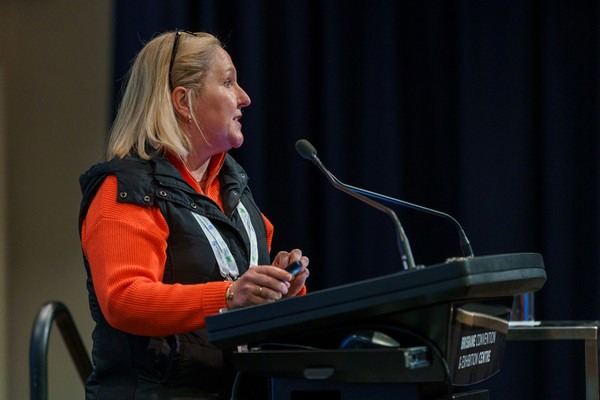Rising production costs and a changing climate mean more and more growers are considering protected cropping. However, the wide array of options can make this a daunting prospect. To help interested growers better understand where to start, two experts in this space shared their insights at the Annual Vegetable Industry Seminar.
The protected cropping session for the Annual Vegetable Industry Seminar was opened by Nicky Mann, a past Chair of Protected Cropping Australia who works at Family Fresh Farms, where they grow various crops under high-tech glasshouses. She said a key advantage of protected cropping is greater control over production.
“You might be able to produce earlier or later than your competitors and capitalise on gaps in the market to get a good return on investment,” Nicky said.

Additionally, it can assist with produce quality and consistency while enabling better use of your labour force.
“We work 365 days of the year regardless of the weather outside and keep our place on the market shelves,” Nicky said.
For anyone contemplating protected cropping, her top piece of advice was to begin with the end in mind. “You need to know what you want to achieve by this type of investment,” she said, adding that there are pros and cons to every system.
At one end of the spectrum are structures like netting and tunnels, which are relatively low-cost and can provide protection from things like birds and hail. At the other end are greenhouses with technology for controlling everything from the airflow to irrigation.
“The more you spend, you should expect more results,” Nicky said, “but sometimes it’s not always the case.”
Weigh up your options
Nicky explained that you need to weigh up the advantages and disadvantages of different solutions.
For example, netting may keep harmful pests off your crop, but also lead to a reduction in pollinators. She shared images of a farm in Spain where a protective plastic structure led to increased heat, which had to be offset with black shading.
She also advised starting small.
“Don’t think of the 500 hectares of capsicum you’re growing outdoors. Think about just doing one or two hectares. Start with a small footprint, learn what you’re doing, and go from there,” said Nicky.
Microclimate considerations
Importantly, covering your crops means you’re creating a microclimate, Nicky said.
“You’re going to have different effects on your plants, your growth and your yield.”
The session’s second speaker was Tony Bundock, a qualified trainer and horticulturist who operates Genesis Horticultural Solutions.
Tony noted computerised solutions allow you to manipulate factors including temperature, humidity, light, CO2 levels, air flow, irrigation and nutrients. Sensors detect relevant information and feed it back to a controller, which compares this against set values.
The system then acts to drive measures back to predetermined values. For example, the system might open vents to increase airflow and drop the temperature.

Strategy drives solutions
But computerised solutions don’t simply know what to do; you need a strategy.
“There’s no pre-set,” Tony said. “If you’re growing capsicum, you don’t have a dropdown box for capsicums. You’ve got to work it out. That’s one of the challenges when you first start getting into this. You need to look at your crop as much as your computer to see what’s going on.”
One important factor you can control is irrigation. Open systems allow water to drain away. Closed systems recycle it, which can lead to savings on water and fertiliser and help growers comply with EPA nutrient-rich water requirements.
However, it can also mean recirculating diseases. He advises anyone considering a high-tech software-based strategy to talk to a consultant.
“You can do it yourself, but at the initial stages, I’d be getting them to give you a hand to get the recipe right,” said Tony.
For more information:
AUSVEG
www.ausveg.com.au
